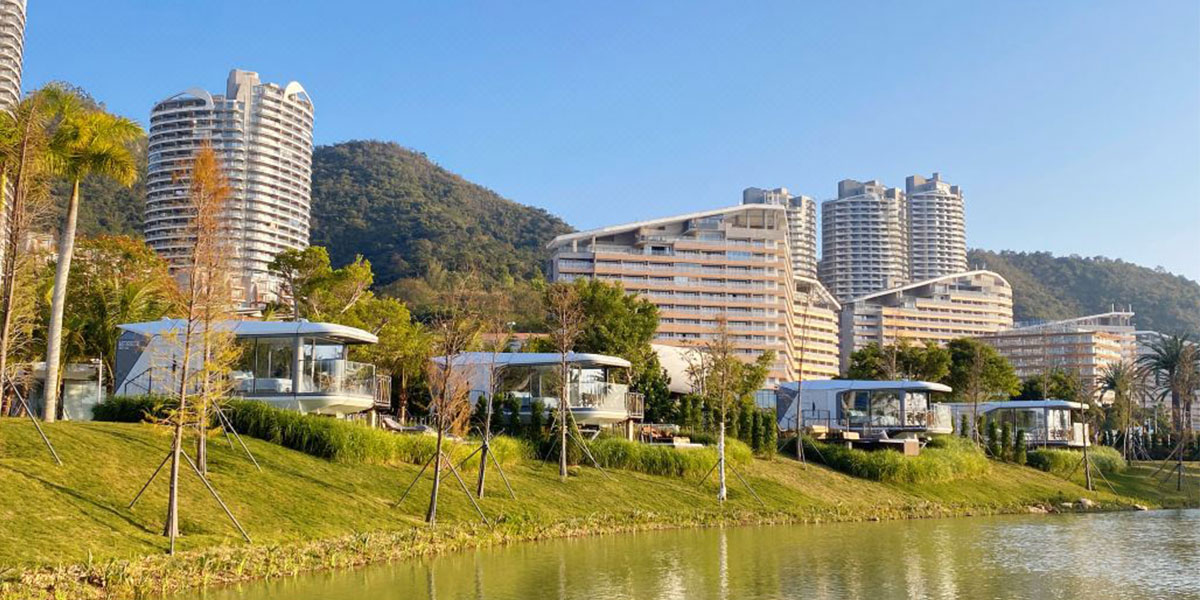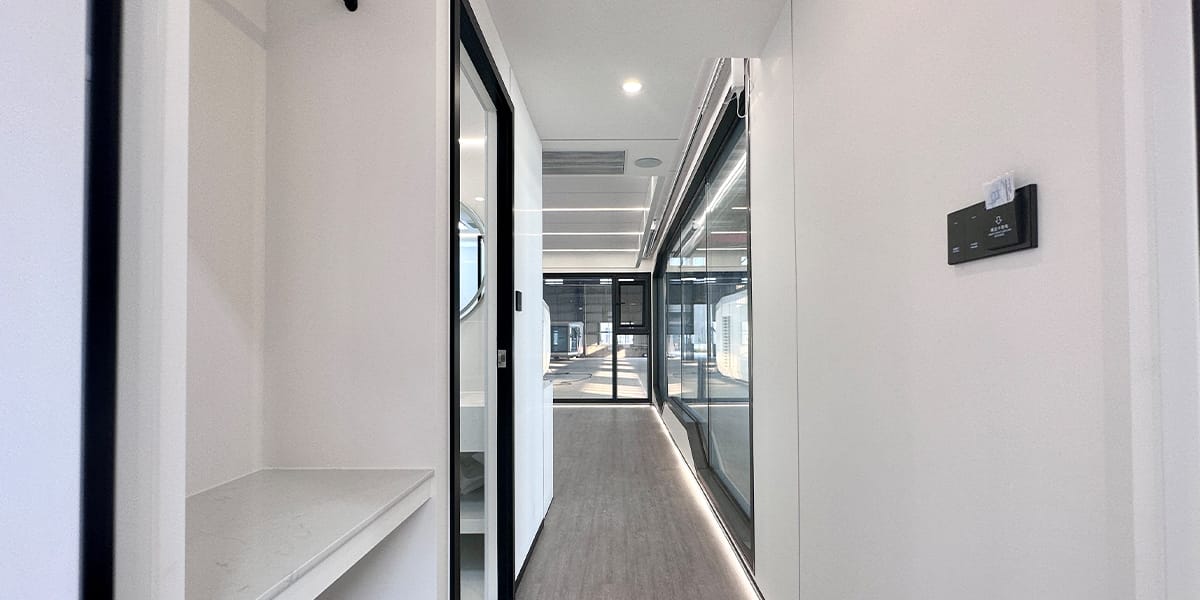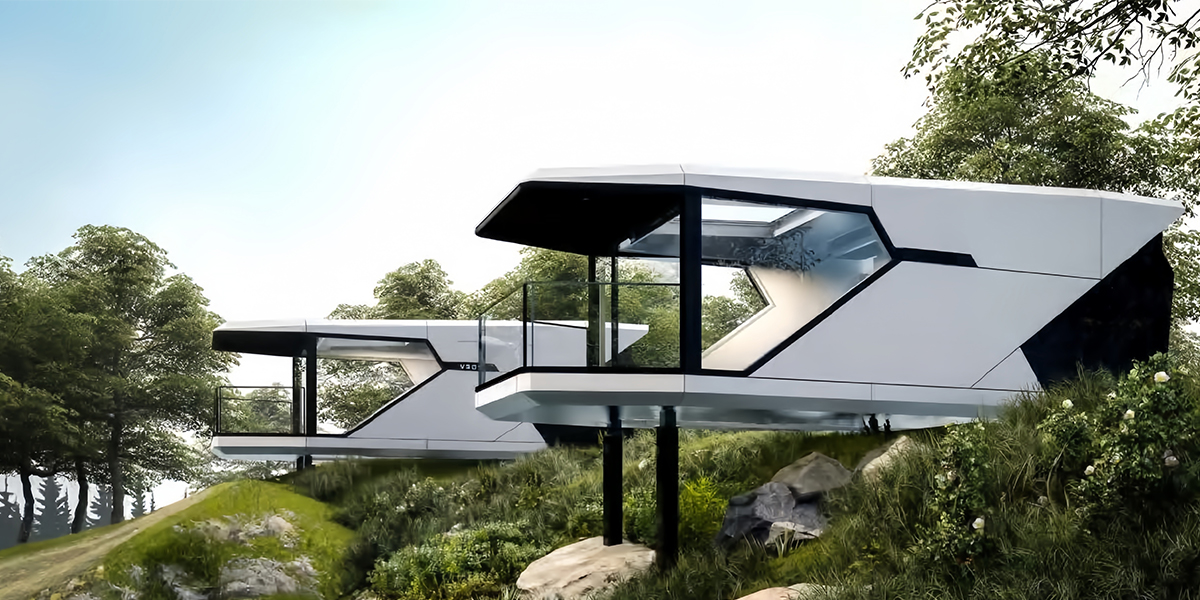
07 Jul Everything You Need to Know About Capsule Homes
Table of Contents
A capsule home gives you a small living space. It is self-contained and uses all the space well. Capsule homes often stack or connect to make a modern place to live. People who like simple living choose this style. You see more of these homes in cities now.
Capsule homes use smart layouts and modular capsules. They also have clever features. Many people save up to half on housing costs. They also use up to 75% less energy with these small homes. You might wonder if a capsule home is right for you.
Key Takeaways
Capsule homes give you small, clever places to live. They help you save money and energy. They use space in a smart way. Modular designs let you add or change rooms fast. Your home can change as your needs change. Smart and eco-friendly things like solar panels help you live well. Energy-saving systems help the planet too. Prefab building means capsule homes are made quickly. There is less waste, and they can be ready in days. Capsule homes are good for people who want simple, cheap living. They may not work for people who need lots of space or privacy.
Capsule Home Basics
What Is a Capsule Home
A capsule home is a new way to live. It is a small unit that has everything you need. The design is compact and uses space well. You can have one capsule or connect many together. Each capsule can be by itself or joined with others for more room.
Capsule homes first came from capsule hotels in Japan. These hotels had small pods for travelers who needed a cheap place to sleep. People liked this idea and started using capsules as homes. Now, capsule homes are found in cities all over the world.
Note: Capsule homes help you live simply. You have less stuff, spend less money, and help the earth.
Many people pick capsule homes instead of regular houses for these reasons:
- Capsule homes are cheaper to buy and take care of.
- You clean and fix things less often.
- The design helps you use every bit of space.
- You can move or make your home bigger more easily.
- Many people like living with only what they need.
How Capsule Homes Work
Capsule homes use smart design to fit a lot in a small space. They often have beds that fold out, hidden places to store things, and furniture that does more than one job. The small layout lets you live well with less.
Most capsule homes are built in factories. Each capsule is made there and then brought to your land. This way saves time and makes less trash. You can stack or join capsules to get more space if you need it.
Capsule homes use new tech to make life better. Many have smart climate control, solar panels, and systems that save energy. These things help you spend less and care for the planet.
Here are some trends and good things about capsule homes:
- Light, modular designs make moving easy and can cut moving costs by up to 40%.
- More people want small homes in crowded cities, with interest up by 25%.
- Modular capsules let you add or take away rooms fast and with little mess.
- Prefab capsules can become a home in just a few days.
- Capsule homes use fewer materials and harm less land, which is good for nature.
- Solar panels can lower your energy bills by up to 70%.
- Smart systems keep your home safe and save energy.
- Many people want to live off-grid, and capsule homes make this possible.
Tip: If you want to save money, live simply, and help the earth, a capsule home may be right for you.
Capsule homes give you choices, comfort, and a way to live with less. You can have a modern life without the big costs and stress of a regular house.
Design Features
 Compact Living Solutions
Compact Living Solutions
You can use smart ideas to make small spaces work. Capsule homes use designs that help you fit in all you need. Some beds fold up into the wall. Some tables can also be used as desks. Storage is often hidden under stairs or inside benches. These tricks help you keep your home neat and open.
- Furniture that does more than one thing saves space.
- Smart storage helps you keep things in order.
- Every part of your capsule home is useful.
Capsule homes show that small homes can still be comfy and useful. You get what you need in a small space.
Modular and Flexible Design
Capsule homes use modular design so you can change things. You can stack, swap, or connect capsules to make your own layout. This way, you can change your home as your needs change. In Brisbane, a three-story building with 26 apartments used this idea. Designers used slot modularity, sharing parts, and swapping parts. These ideas made it easy to build and gave many choices.
- Slot modularity lets you move wall and floor panels to fit your space.
- Sharing parts means you can use the same bathroom pod in different places.
- Swapping parts lets you add balconies or other things when you want.
In Japan, modular design helps people make homes that fit their needs. You can use parts again and change your home without much waste. This makes capsule homes a smart pick for many people.
Smart and Eco-Friendly Elements
Capsule homes often use smart tech and green materials to help the planet. You can put in solar panels, smart thermostats, and lights that turn on by themselves. These things help you save energy and money. For example, a family in California saved 20% on their energy bill with smart tech. In London, a home with good appliances and a central system saved 30% on power each month.
- Blinds that move by themselves and smart power strips use less energy.
- Lights with sensors and smart HVAC systems change to fit your needs.
- Water-saving tools help you use less water and spend less money.
Smart systems work with green energy to help the earth. You get better tech and more comfort with less waste. Capsule homes show that you can live green and modern in a small space.
Capsule Houses Construction
Prefabrication and Materials
Capsule houses are built in factories to save time and effort. Workers use machines and tools to make each capsule house. This way, you get better quality and spend less money. Most of the work happens inside, so bad weather does not slow things down.
Capsule houses use strong and smart materials. Here are some examples:
- Steel frames make the house strong and can be used again.
- Aluminum panels cover the outside. They are light and do not rust.
- Fiberglass is used for many inside parts. It lasts long and is easy to clean.
- Composite panels mix wood, plastic, and resin. These panels keep your home warm and strong.
- Polyurethane foam goes in the roof and windows. It keeps heat in and cold out, so you save energy.
- Factories use these materials to help the planet. Building in a factory makes less waste and lowers pollution. Choosing capsule houses with eco-friendly materials helps the earth.
Tip: Modularity lets you add or swap capsules. You can change your home as your needs grow.
Installation and Setup
When your capsule house gets to your land, setup is simple. Workers bring the finished capsules to your property. Cranes put each unit where you want it. You can stack or connect capsules to make your own design.
The whole setup takes just a few days. You do not have to wait months like with a normal house. Capsule houses let you move in fast. You also skip a lot of mess and noise.
If you need more space, you can add more capsules later. This makes capsule houses a smart choice for many people. Your home can grow and change with you.
Who Chooses Capsule Homes
 Ideal Users
Ideal Users
You might ask who likes capsule homes the most. Many people pick capsule homes because they want a simple life. If you like neat spaces and smart design, you may enjoy living in one. Young adults, mostly those aged 21 to 34, often choose capsule homes. They want cheaper places to live and like to travel or move for work. Solo travelers and students also pick capsule homes. These homes give you privacy and help you save money.
Women are a big part of the capsule house market. Many women care about using less and living simply. If you want to waste less and own fewer things, a capsule home can help you. People who care about the earth also like capsule homes. You can use less energy and help nature.
Note: Capsule homes are good for people who want to live simply, save money, and help the planet.
Common Uses
Capsule homes have many uses. You can live in one as your main home, use it for guests, or stay there on vacation. In cities, people use capsule homes for short visits or as student housing. Some companies use them for workers at job sites. You can also find capsule homes at eco-friendly resorts.
Market research says capsule homes are most popular in Asia-Pacific. This area has over 60% of the market. People in busy cities like Tokyo and Seoul use capsule homes to save space and money. North America is also seeing more capsule homes, especially in cities that care about the environment.
Here is a table that shows where capsule homes are common and why:
Region | Market Share (2023) | Key Uses and Reasons |
|---|---|---|
Asia-Pacific | 60.1% | Budget travel, dense city living, student housing |
North America | Largest share | Innovation, eco-friendly cities, flexible housing options |
You can see capsule homes fit many needs. You can use one as your main home, for guests, or for travel. Capsule homes help you live well in small spaces and change as your needs change.
Capsule House Pros and Cons
Benefits
Capsule homes offer many benefits for people who want a simple lifestyle. You can save money because these homes cost less than regular houses. Many people choose capsule homes as an affordable shelter. You spend less on rent, bills, and repairs. This makes low-cost living possible for more people.
You also help the planet when you pick capsule homes. These homes use fewer materials and less energy. Many designs include solar panels and smart systems. You use less water and power, which supports sustainability. Capsule homes often use recycled or eco-friendly materials.
You can move or change your home easily. Modular designs let you add or remove rooms as your needs change. You do not need to wait long for construction. Most capsule homes arrive ready to use in just a few days.
Tip: Capsule homes give you freedom, save you money, and help the earth.
Drawbacks
Capsule homes also have some limits. You get less space than in a regular house. If you have a big family or many things, you may feel crowded. Privacy can be hard to find, especially if you share walls with others.
Some places have rules about small homes. You may need special permits or face zoning issues. Not every city allows capsule homes. You should check local laws before you buy or build.
You may also need to adjust to a new way of living. Storage is limited, so you must keep only what you need. If you like to host large groups, a capsule home may not fit your lifestyle.
Pros | Cons |
|---|---|
Lower cost | Less space |
Eco-friendly | Limited privacy |
Fast setup | Legal and zoning challenges |
Flexible and modular | Less storage |
Note: Think about your needs and habits before you choose capsule homes.
Capsule homes give you a smart way to live with less. You get flexible design, lower costs, and eco-friendly features. You may face limits on space and privacy. Think about your needs and daily habits before you choose this lifestyle.
Want to learn more?
- Visit local showrooms.
- Talk to people who live in capsule homes.
- Research builders and zoning rules in your area.
Remember: The right home fits your life, not just your budget.
FAQ
How much does a capsule home cost?
You can expect to pay between $10,000 and $50,000 for most capsule homes. The price depends on size, materials, and features. Some luxury models cost more. Always check what is included before you buy.
Can you live in a capsule home year-round?
Yes, you can live in a capsule home all year. Many have insulation, heating, and cooling systems. You stay comfortable in both hot and cold weather.
Do capsule homes need special permits?
You may need a permit or approval from your city. Rules change by location. Always check local laws before you set up a capsule home.
How do you get water and electricity in a capsule home?
Most capsule homes connect to city water and power. Some use solar panels and water tanks for off-grid living. You choose the setup that fits your needs.




 Compact Living Solutions
Compact Living Solutions Ideal Users
Ideal Users